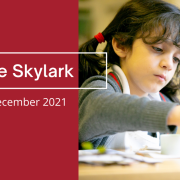Year 3 Class Assembly: Keeping Ourselves Safe
This morning, it was Year 3’s turn to show their fellow Infants and Juniors what they have been learning, in the form of a Class Assembly with the theme of ‘Keeping Ourselves Safe.’
The children presented helpful tips for staying safe in school, outside, and online. Some suggestions included washing hands and using hand sanitiser to stay safe at school during the pandemic; wearing proper safety equipment like helmets on a bicycle; and using high-visibility clothing to help them stay safe out on the street. Miss Moorhouse noted that the children have been learning about the luminescent and reflective properties of this type of clothing in their Science lessons.
The class then gave four helpful rules for maintaining safety online. First, always show a grownup you trust any new websites or games that you want to play. Second, never talk to strangers online. Third, never give out personal information; and finally, be kind to your friends online. The assembly ended with a guiding principle to help pupils remember what they’d just heard: ‘Be safe, Be Seen’. What a practical and helpful assembly by Year 3!






